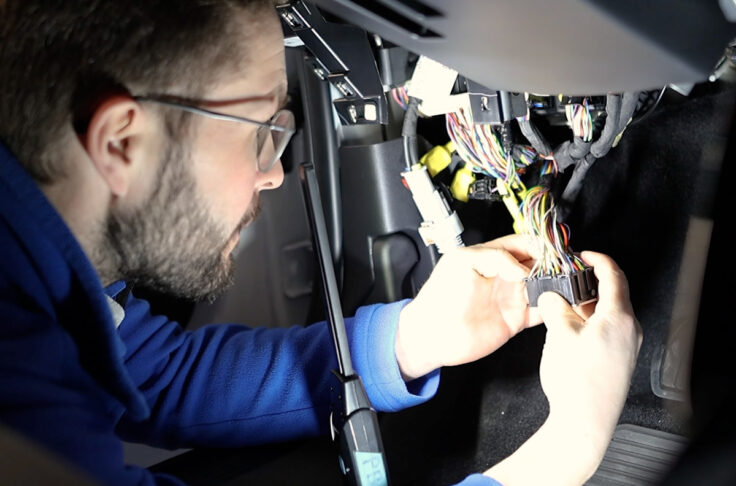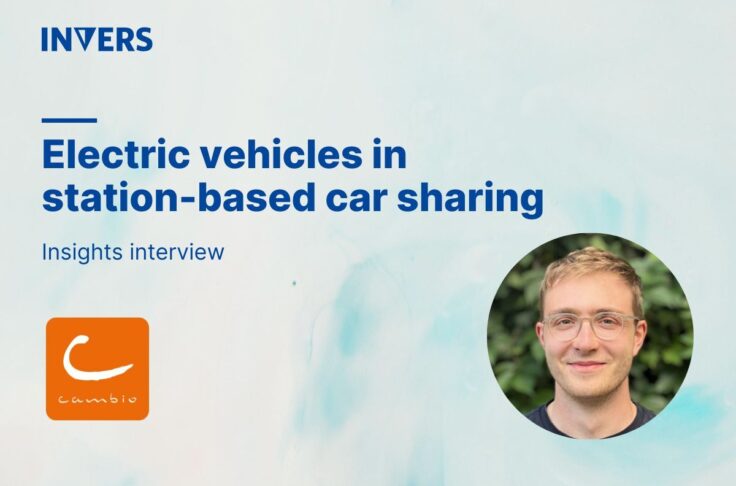
Quantum Mobility



When Shared Mobility Hits Home
Affordability isn’t just about rent anymore-it’s about how we move. The cost of owning a car is second only to the cost of housing, yet most cars sit idle 95% of the time.
That’s where Mobility-as-an-Amenity (MaaA) comes in. Quantum Mobility makes shared vehicles a part of residential life: keyless, on-demand, and reserved for residents. As cities rethink parking to support denser, more affordable housing, MaaA is becoming essential.
Building a car sharing model that fits
The founders of Quantum Mobility, former Car2Go North America executives, drew on their extensive experience in carsharing and the challenges of scaling mobility. When Car2Go exited North America in 2020, they seized the opportunity to launch a new venture in shared mobility.
“We felt like there was still so much room for innovation,” recalls Nick Vetsch, Quantum Mobility’s VP of Business Development. “We’d spent years in car sharing. And when the big players started pulling out, we thought—someone’s got to stay and see what comes next.”
“We saw a lot of gaps,” says Bob Demetrescu, Founder of Quantum Mobility. “Younger people are moving into dense neighborhoods. Insurance costs are rising. Cities are moving toward more flexible mobility.
It was clear that the market was shifting. We just needed a model that could shift with it.”
Quantum Mobility, which launched its service in 2024, aims to make carsharing an effortless part of daily life by embedding vehicles in residential buildings and prioritizing convenience for residents.
Mobility as an amenity: not just a spot, but a service
Quantum Mobility vehicles have dedicated parking spaces and garage access at partnering residential properties, making car sharing a building amenity available on-site just like the gym, or roof-top patio. They’re available only for residents and accessible 24/7 through keyless technology provided by the Quantum’s app.
This approach lets developers reduce costs by reducing the number of required parking spaces, which allows for more rentable space and improved ROI per square foot. MaaA also future-proofs buildings for progressive housing goals and lifestyles that demand walkable neighborhoods.
For property managers, the model is refreshingly low-lift: no key exchanges, no concierge training. The entire experience is streamlined through Quantum’s integration with Launch Mobility’s carsharing software and INVERS’ telematics hardware.
In a competitive housing market, reliable on-site car sharing isn’t just a lifestyle perk—it’s a smart business move.

The Ivory: housing more people by parking fewer cars
One of Quantum Mobility’s most compelling projects is The Ivory, a pioneering car-free residential building in Austin, TX — a pioneering car-free residential building opening in Fall 2025 that’s made possible by eliminating on-site parking for residents. Without the need to build parking, the developer was able to increase the number of homes by nearly 40%, with every resident receiving an e-bike and access to two shared Quantum Mobility electric vehicles.
“This development wouldn’t have worked ten years ago,” Nick shares. “But people’s needs are different now. They work from home. They’re rethinking ownership. They just want access.”
The Ivory shows that shared mobility doesn’t just support urban living, it enables it. And forward-thinking city policies are making projects like this possible. Austin paved the way for developers to rethink urban space by becoming the largest U.S. city to eliminate parking minimums.
The tech behind the trust
Quantum Mobility’s system centers on seamless, 24/7 keyless access, allowing users to unlock vehicles directly through the app. Users unlock vehicles with a tap, thanks to Bluetooth technology that works even in areas with poor cell service.
This approach enhances convenience and reduces costs by eliminating the need for key fobs. Whether in a dense city or a remote area like the Texas Hill Country, access remains smooth and dependable.
“We can confidently tell members: go camping, go off-grid” Nick shares. That peace of mind extends to urban life too: underground garages and dead zones are no longer a deal-breaker for access.
Behind the scenes, real-time telematics allow Quantum Mobility to track vehicle status and driving behavior, enabling quick resolution of issues like toll disputes or scheduling conflicts. Jon Zelazo, VP of Operations, explains what they did when a toll charge was sent to Quantum for a vehicle that wasn’t in use: “We just cross-referenced the rental history, pulled up the telematics in INVERS Fleet Control, took a screenshot, and sent it to the toll company. Within 24 hours, the charge was dropped.”
Automated reservation tracking also helps Quantum Mobility identify and resolve potential booking conflicts before they happen.
More than a parking spot: a new kind of freedom
At its core, Quantum Mobility offers shared transportation designed to fit today’s lifestyles, especially in dense, walkable neighborhoods with changing work patterns. As car ownership becomes increasingly costly, more people are rethinking its value. By embedding shared vehicles directly where people live, Quantum Mobility makes transportation less of a burden and more of a seamless, built-in benefit.
Ready to Bring Seamless Mobility to Your Community?
If you’re an operator exploring new ways to grow, streamline, or differentiate your carsharing service, now’s the time to think beyond old models. Mobility-as-an-Amenity offers a smarter path to user trust, operational control, and long-term sustainability.
Let’s talk about how you can bring it to your market or build it into your next move. Check out other success stories on our website.


